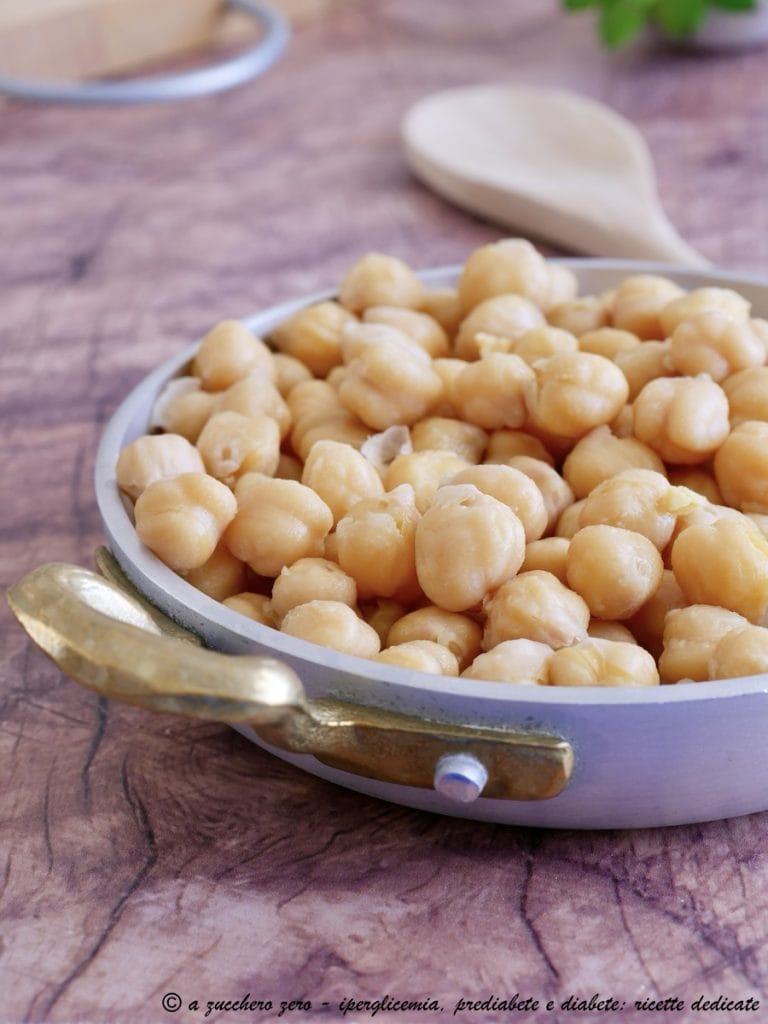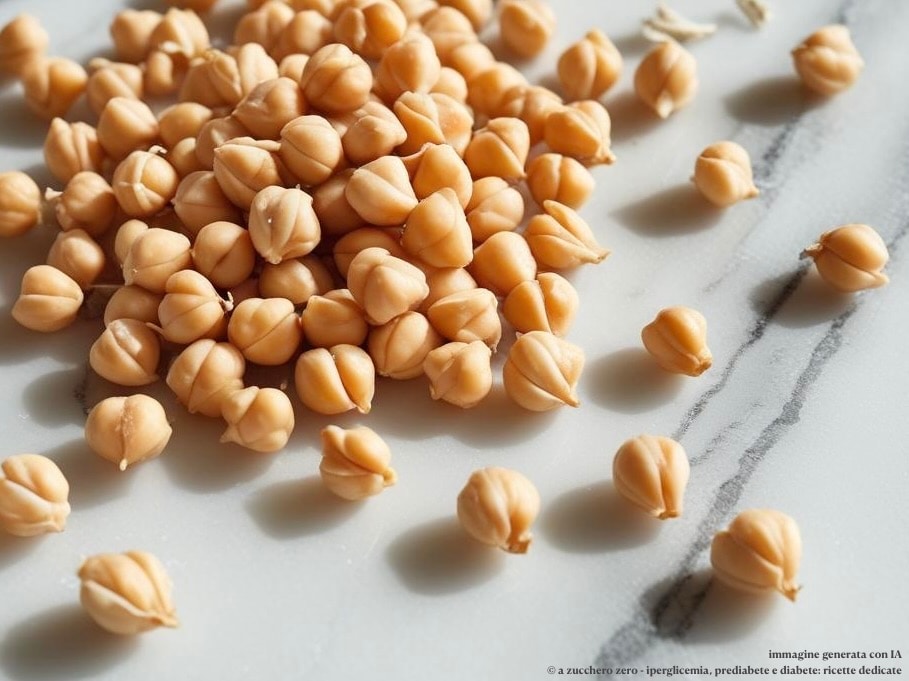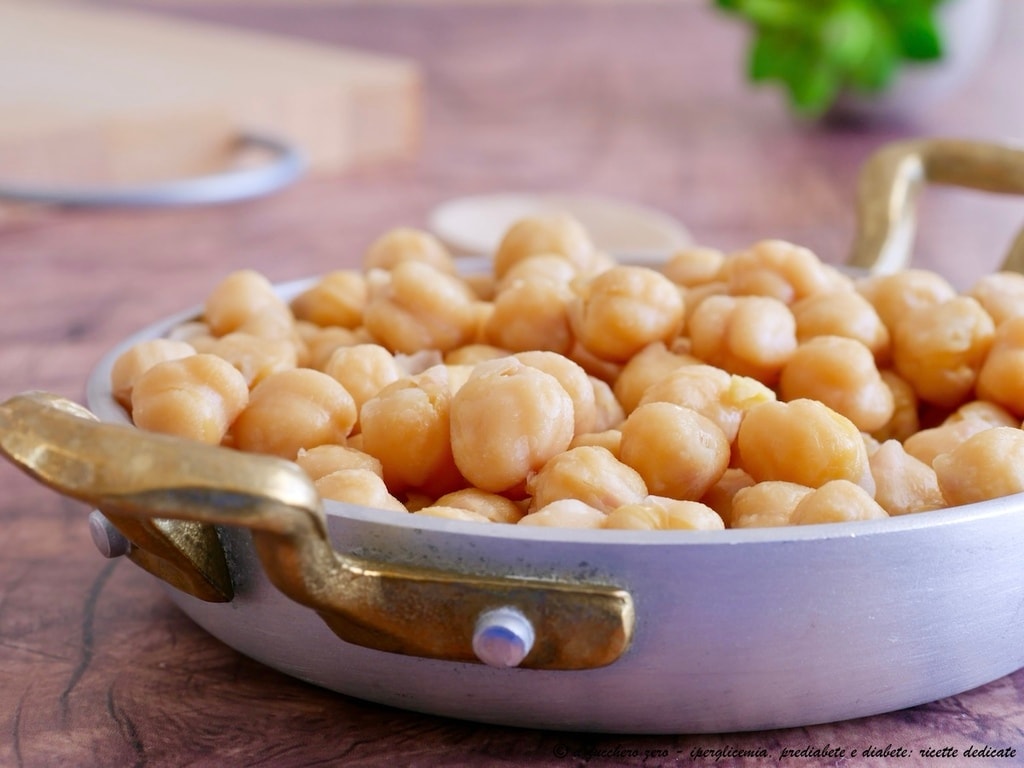Cooking dry chickpeas: here’s how to do it simply using a pressure cooker.
My basic recipe for cooking chickpeas perfect as a soup or as a base for appetizers, first or main courses.
With soaking
Remember that dry legumes need to soak for 12-24 hours, during which it is good to change the water a couple of times and then rinse them well before cooking.
Choice of chickpeas
I prefer to buy locally sourced chickpeas.
Cooking with pressure cooker.
Cooking chickpeas in pressure cooker reduces cooking times and makes them softer and more digestible.
Dialect curiosity
In Sicilian, chickpeas are called cìciri.
This gave rise to a popular saying: “amuri è bruoru ri ciciri” meaning “love is chickpea broth” to describe a light love that is easily digestible just like a simple chickpea broth.
Traditionally, chickpeas were cooked with pork rind – the cutini.
In my kitchen, I prefer them simple, light, and digestible.

- Difficulty: Easy
- Cost: Economic
- Rest time: 12 Hours
- Preparation time: 20 Minutes
- Portions: 2 People
- Cooking methods: Pressure cooker
- Cuisine: Italian
Ingredients
- dry chickpeas (2 servings weight according to dietary plan)
- 1 broth cube (homemade vegetable)
- 1 pinch baking soda
- water (double the volume of chickpeas)
- to taste salt (at the end of cooking)
- 1 drizzle extra virgin olive oil (raw)
Suggested Tools
- 1 Colander fine mesh
- 1 Bowl or salad bowl
- Pressure cooker
Preparation
Recommended servings from dietary guidelines
– fresh, soaked or canned legumes: 150 g;
– dry legumes: 50 g.
The weights are always personal.
I usually prepare more servings to have a convenient stock to freeze.
Pour the chickpeas onto a surface and check them carefully with your fingers, removing any impurities or small stones.

Soaking is used to soften the chickpeas and to release anti-nutrients into the water.
The soaking water should not be used for cooking.– wash and rinse the dry chickpeas well until the water is clear;
– soak for about 12 hours, changing the water a couple of times;
– rinse the hydrated chickpeas well before cooking.Anti-waste tips
Use a fine mesh colander or ricotta baskets and collect the soaking water to water plants; not for food use.The hydrated and cleaned chickpeas are ready to be poured into the pot.
Preliminary
– always consult the manual of your pressure cooker;
– check that the valves and seals are clean;
– do not exceed the maximum limit indicated inside the pot.Cooking in a pressure cooker
In the pressure cooker, pour:
– the chickpeas;
– a vegetable broth cube [optional];
– the baking soda to further soften the chickpeas during cooking without them breaking apart;
– water double the volume of the chickpeas.Close the pot.
Always remember to check that the seal is well positioned and the valve is clear.Bring to a boil over medium-high heat until the pot comes under pressure and the valve emits the classic whistle.
Once under pressure, reduce the heat and cook for about 20 minutes.
Turn off the heat, let the steam vent completely, then open the lid carefully and away from your face.Add salt: now and not at the beginning of cooking to prevent the legume’s outer shell from hardening, making cooking longer.
For those with electric pressure cookers like Instant Pot, the steps are similar but the commands vary: e.g., “Pressure Cook” for 20 minutes + natural steam release.
Your digestible and light chickpeas are ready.
In the basic recipe perfect as a soup or as a base for appetizers, first or main courses.
Plate and top with a drizzle of raw oil to enjoy them at their best.
Enjoy your meal!
After cooking, remove the skins or cuticles from the chickpeas.
This procedure is also valid for beans and broad beans or mixed legumes.
For lentils, peeled lentils, and peas or mixed legumes, I use the IMCO or traditional pot.
Storage, tips, and variations
This is a basic recipe so I cook the chickpeas plain.
If you prefer, you can add bay leaf or wild fennel.
Store cooked chickpeas in airtight containers:
– in the fridge for up to 2-3 days;
– in the freezer for up to 3 months.
It is advisable to drain the legumes before freezing: it may result in a minimal loss of nutrients but in the context of freezer storage, it is a useful choice:
– better preservation without ice crystals;
– faster thawing;
– versatility: drained legumes are more practical to use in different recipes.
The amount of nutrients lost is minimal: most nutrients remain in the legume itself, and many of these substances would degrade anyway during freezing and subsequent reheating.
Let the legumes cool completely, drain, and portion them.
If you want to recover everything, you can use the liquid immediately or freeze it separately.
When you defrost them, you can replenish the liquid by adding water or broth.
If you plan to use them in brothy dishes like soups or velvety soups, you can freeze them with a little of their cooking liquid, ensuring the container is suitable and there’s room for expansion.
FAQ (Frequently Asked Questions)
Tips on how to pair legumes
Recommended pairings:
– legumes + cereals [e.g., bread, pasta, or rice], preferably choose whole grains;
– legumes + proteins.
Respect the proportions and combinations indicated in your dietary plan.
To delve deeper into the subject read the article by clicking the following link: Pairing legumes in the diet.How do I ensure the legumes are of Italian origin?
Legumes are often grown abroad and packaged in Italy.
Carefully check that the packages indicate:
Origin: Italy; Cultivated in Italy; 100% Italian Product.
The phrase “EU” or “non-EU” means they come from various countries, such as Canada.How many grams of chickpeas per person?
Recommended servings from dietary guidelines
– fresh, soaked, or canned legumes: 150 g;
– dry legumes: 50 g.
Amounts should always be adjusted to personal nutritional needs.Why soak chickpeas?
Dry chickpeas always need to be soaked before cooking.
It is used to soften the chickpeas and to release anti-nutrients into the water.
The soaking water should not be used for cooking.Why add baking soda to chickpeas?
To further soften the chickpeas during cooking without them breaking apart.
How to make chickpeas more digestible?
How to reduce chickpea fibers?After cooking, remove the skins or cuticles from the chickpeas.

